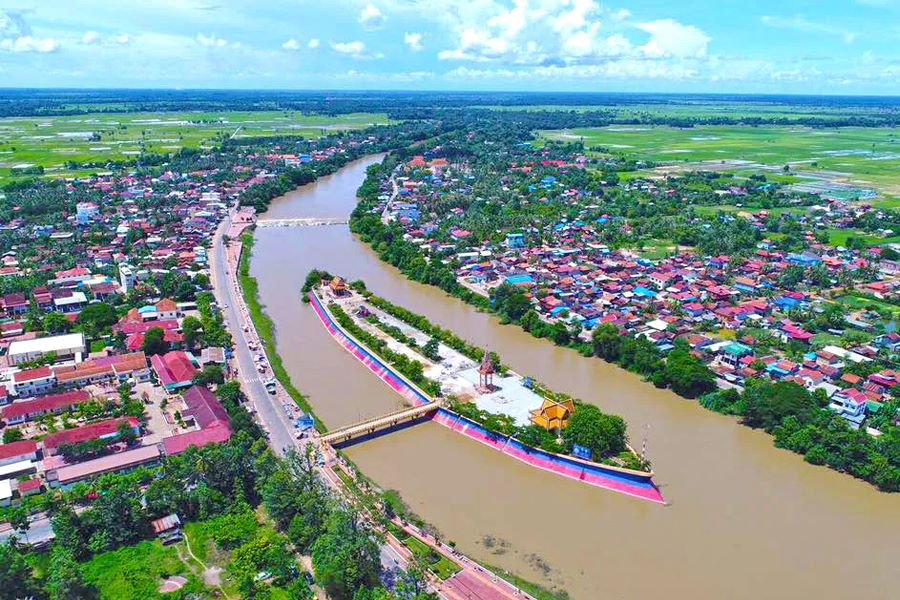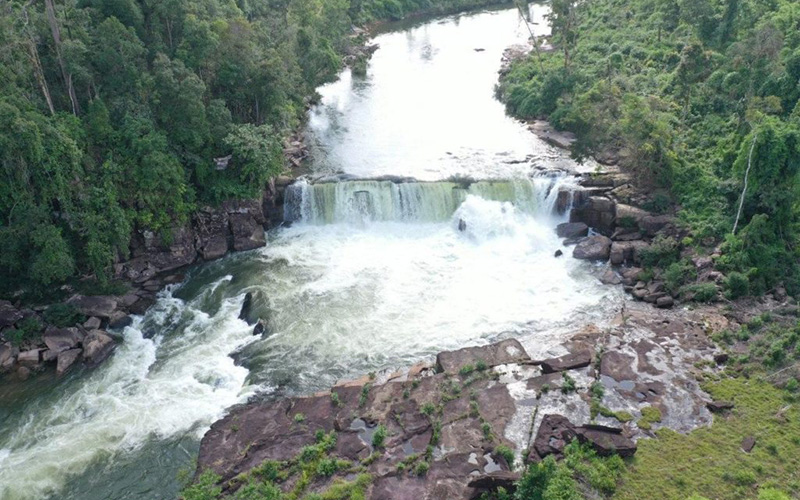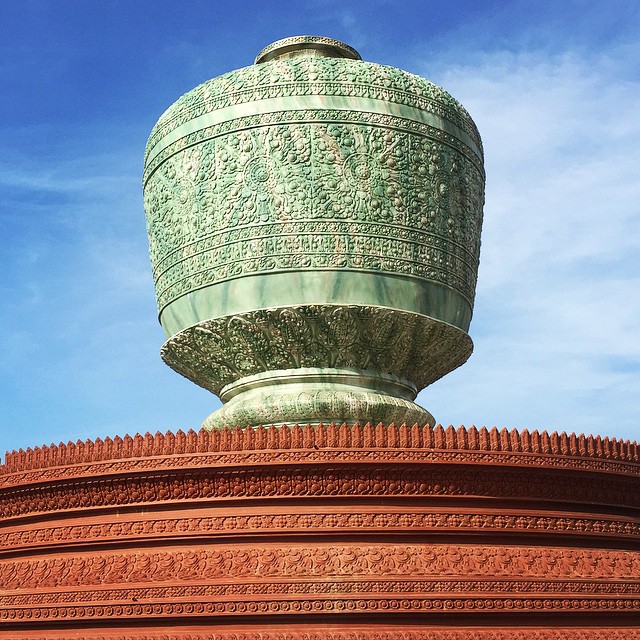Located in western Cambodia, Pursat is a province known for its scenic landscapes, floating villages, marble craftsmanship, and rich cultural heritage. Though often overlooked by tourists, Pursat offers a blend of natural beauty, history, and local traditions that make it a fascinating place to visit. From the Tonle Sap Lake to the Cardamom Mountains, Pursat provides a glimpse into the authentic Cambodian way of life.
1. Natural Beauty and Adventure
Tonle Sap and Floating Villages
- Pursat borders the Tonle Sap Lake, Southeast Asia’s largest freshwater lake.
- The floating villages of Pursat, such as Kampong Luong, offer a unique cultural experience where visitors can see houses, schools, and markets built on stilts.
- A boat tour around these villages provides an opportunity to observe traditional fishing practices and the daily lives of people living on the water.

Cardamom Mountains and Eco-Tourism
- The Cardamom Mountains stretch across Pursat’s western region, offering trekking, camping, and wildlife exploration.
- The mountains are home to a variety of flora and fauna, including endangered species such as Asian elephants and clouded leopards.
- Visitors can explore the forests, waterfalls, and caves, making it a great destination for nature lovers and adventure seekers.
2. Historical and Cultural Landmarks
Wat Bakan (Bakan Pagoda)
- One of the oldest and most significant temples in Cambodia, Wat Bakan dates back to the 11th century.
- It is considered a sacred site, with many locals visiting to pray and meditate.
- The temple is located near the Cardamom Mountains, making it an ideal stop for those exploring the region.
Oudong Mountain and Ancient Ruins
- Oudong Mountain, located in Pursat province, was once the capital of Cambodia and features ancient stupas and pagodas.
- The ruins provide insight into Cambodia’s rich history and Buddhist traditions.
3. Marble Craftsmanship: The Pride of Pursat
Pursat is famous for its marble production, and local artisans have mastered the art of stone carving. The province’s marble quarries provide high-quality stone used to create Buddha statues, decorative sculptures, and monuments.

Visiting Marble Workshops
- In Pursat town, visitors can tour local workshops where artisans create hand-carved statues and traditional Khmer sculptures.
- These unique souvenirs are available for purchase and reflect the centuries-old craftsmanship of the region.
4. Local Cuisine and Markets
Pursat Market
- The central market in Pursat town is a lively place where visitors can find fresh produce, traditional Khmer dishes, and handmade goods.
- It is an excellent spot to sample Cambodian street food and experience local culture.
Traditional Foods
- Prahok (fermented fish paste) is a staple ingredient in many local dishes.
- Grilled freshwater fish from Tonle Sap is commonly served with rice and fresh herbs.
- Nom Banh Chok (Khmer noodles) is a popular dish enjoyed by locals in the region.
5. How to Get to Pursat
Pursat is located approximately 200 km from Phnom Penh and 100 km from Battambang, making it a convenient stop between the two cities.
- By Bus: Buses and minivans regularly travel between Phnom Penh, Pursat, and Battambang.
- By Train: The Royal Railway also connects Phnom Penh to Pursat, offering a scenic journey through Cambodia’s countryside.

6. Why Visit Pursat?
✔️ Experience the authentic floating villages of Kampong Luong.
✔️ Explore the Cardamom Mountains with trekking, waterfalls, and wildlife.
✔️ Discover Cambodia’s ancient history at Wat Bakan and Oudong Mountain.
✔️ Witness the incredible craftsmanship of marble artisans.
✔️ Enjoy a peaceful, off-the-beaten-path experience in Cambodia’s countryside.
Pursat is a hidden gem that offers a perfect blend of nature, history, and culture. Whether you are looking for adventure, spiritual exploration, or a quiet retreat, this province provides an unforgettable journey into Cambodia’s authentic rural life.




